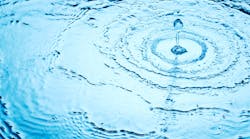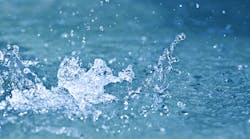Technologies and systems exist to help improve the energy efficiency of the Municipal drinking water & wastewater industry, but costs and competing priorities have slowed their implementation, according to a recent report by the U.S. Government Accountability Office (GAO).
The report to Congress, released in March, focused on the amount of energy needed to supply, use and treat water. GAO was asked to describe what is known about the energy needed for the urban water lifecycle and to determine technologies and approaches that could lessen that need.
GAO reviewed scientific studies, government-sponsored research, and other reports and interviewed specialists from a variety of organizations, including drinking water and wastewater utilities; federal, state, and local government offices responsible for water or energy about the energy needed to move, use, and treat water.
GAO also selected three cities—Memphis, TN; San Diego, CA; and Washington, D.C.—as illustrative case studies to help understand the energy demands of water in different areas of the country.
GAO found a variety of approaches can improve the energy efficiency of drinking water and wastewater processes, but determining the most appropriate solution depends on the circumstances of a particular system and requires an understanding of the system’s current energy use. Process optimization, equipment and infrastructure upgrades, water conservation, and improved energy management are approaches that can help reduce the energy demands for water. In addition, the increased use of renewable energy could offset the energy purchased by water utilities from energy providers.
The following are key points outlined in the GAO report:
Energy Management --
Improved energy management, including conducting energy audits of treatment facilities or systems, are a necessary first step to reducing energy demands. While many technologies and approaches have been identified to reduce the energy demands for water, determining the most appropriate solution depends on the circumstances of a particular system, including the type of facilities and treatment processes in place, and requires an understanding of current energy use.
Energy audits can help managers identify opportunities to change plant operations in ways that will save energy. For example, the energy supplier for one wastewater treatment plant in Memphis conducted an energy audit of the blower system, which used about 75 percent of the plant’s total energy. As a result of the audit, operators changed their practices to run blowers at the lowest levels possible while still ensuring they continued to meet the effluent discharge standards required by the plant’s permits.
Similarly, in 2000, San Diego established an in-house energy management program, which includes an audit team that looks for technologies and approaches to lessen the energy demands of the city’s drinking water and wastewater systems. The team identified over a dozen energy conservation measures that could be applied to reduce energy consumption at two of the city’s sewer pump stations, including installing timers to turn off lighting and upgrading, resizing, and replacing motors and blowers.
Modifying Pumping Operations --
A variety of modifications could increase the efficiency of pumping systems. For example, operating constant speed pumps as near as possible to their most efficient speed, and operating multiple smaller pumps rather than a few large pumps to better match pumping needs can help maximize pumping efficiency.
In addition, using variable frequency drives may allow facility operators to accommodate variations in water flows by running pumps at lower speeds and drawing less energy when water flows are low. Potential energy savings from the use of VFDs can range from 5 to 50 percent or more, according to studies reviewed by GAO.
“However, these studies and some specialists we spoke with also noted that VFDs are not necessarily well suited for all applications — such as when flow is relatively constant — and that potential benefits of VFDs should be evaluated based on system characteristics, such as pump size and variability of flow,” the researchers wrote.
Modifying Aeration Operations --
Aeration in wastewater treatment consumes a significant amount of energy, and systems can be reconfigured and better controlled to improve energy efficiency. Specifically, installing variable controls on blowers to enable operators to better match aeration with oxygen requirements can reduce energy demands.
Also, dissolved oxygen control systems can be used to match oxygen supply with demand by monitoring the concentration of dissolved oxygen in the wastewater and adjusting the blower system or mechanical aerator speed accordingly. In addition, probes can be installed to monitor dissolved oxygen levels within the wastewater and signal operators when the system may need adjustment.
Right-Sizing Equipment --
Many wastewater treatment systems were designed to handle greater capacity in the future because of anticipated population growth. However, this growth has not always occurred and, as a result, existing equipment may be oversized and consume more energy than is needed to treat current flows, according to some. Proper sizing and selection of pumping and aeration equipment to more closely match system needs can help maximize efficiency. For example, in Washington, D.C., the operators of the wastewater treatment plant replaced a 75-horsepower motor with a 10-horsepower motor in one facility to better meet actual energy demands.
Redesigning Water Systems -- Redesigning water systems in ways that better integrate drinking water, wastewater, and stormwater management could improve the energy efficiency of water systems overall. Decentralizing treatment systems, implementing approaches to better manage stormwater, reusing wastewater, and using less energy-intensive processes for biological treatment can help reduce energy requirements.
For example, current water systems primarily rely on a few plants with large capacities to treat drinking water and wastewater. Systems could be redesigned to incorporate more treatment plants with smaller capacities and to locate these plants closer to the point of water use by customers, thereby reducing some of the energy required for pumping to the treatment site.
Renewable Energy --
Renewable energy projects can help water and wastewater treatment facilities to reduce energy purchased from energy providers. Renewable energy projects may include solar, wind, and hydroelectric power as well as the recovery and use of biogas from wastewater treatment processes. In addition, hydro turbines are an option for recovering energy in the distribution system. For example, water systems with changes in topography that have pressure-reducing valves in place can install turbines that generate electricity as water flows past. This energy could then be recovered for use in powering equipment.
Key Barriers
GAO identified a number of key barriers to adopting the available technologies and approaches that could reduce the energy demands of the urban water lifecycle. These barriers fall into five categories: (1) costs associated with these technologies, (2) inaccurate water pricing, (3) barriers associated with how water utilities operate, (4) competing priorities at drinking water and wastewater facilities, and (5) the lack of public awareness about the energy demands of the urban water lifecycle.
While energy-saving technologies may lessen the energy demands of the urban water lifecycle, such improvements are often expensive to adopt.
“Many specialists told us that, as a result, utilities may not be able to justify the costs necessary to install energy-efficient equipment. For example, some specialists told us that upgrading to VFDs, higher-efficiency pumps, and ultra-fine bubble diffusers may lessen a water facility’s energy demands, but the costs of installing these technologies can be prohibitive for some systems, and it can take years to realize the full energy-saving benefits,” the researcher said.
A copy of the report, GAO-11-225, “Energy-Water Nexus: Amount of Energy Needed to Supply, Use, and Treat Water Is Location-Specific and Can Be Reduced by Certain Technologies and Approaches” can be downloaded from the GAO website: www.gao.gov/new.items/d11225.pdf
WW
More WaterWorld Current Issue Articles
More WaterWorld Archives Issue Articles


